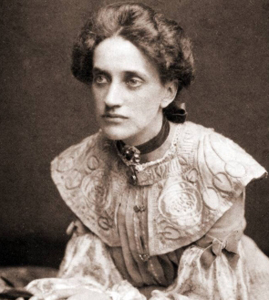
Ann Macbeth was a British embroiderer, designer, teacher and author, a member of the Glasgow Movement and an associate of Charles Rennie Mackintosh. She was also an active suffragette and designed banners for suffragists and suffragettes movements.

Barbie is a fashion doll created by American businesswoman Ruth Handler, manufactured by American toy and entertainment company Mattel and introduced on March 9, 1959. The toy is the figurehead of an eponymous brand that includes a range of fashion dolls and accessories. Barbie has been an important part of the toy fashion doll market for over six decades. Mattel has sold over a billion Barbie dolls, making it the company's largest and most profitable line. The brand has expanded into a multimedia franchise since 1984, including video games, computer-animated films, television/web series and a live-action film.
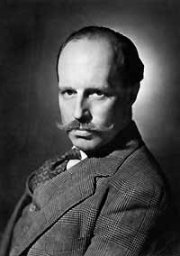
Sir Basil Urwin Spence, was a Scottish architect, most notably associated with Coventry Cathedral in England and the Beehive in New Zealand, but also responsible for numerous other buildings in the Modernist/Brutalist style.
The Scottish Renaissance was a mainly literary movement of the early to mid-20th century that can be seen as the Scottish version of modernism. It is sometimes referred to as the Scottish literary renaissance, although its influence went beyond literature into music, visual arts, and politics. The writers and artists of the Scottish Renaissance displayed a profound interest in both modern philosophy and technology, as well as incorporating folk influences, and a strong concern for the fate of Scotland's declining languages.
Christine Borland is a Scottish artist. Born in Darvel, Ayrshire, Scotland, Borland is one of the Young British Artists (YBAs) and was nominated for the Turner Prize in 1997 for her work From Life at Tramway, Glasgow. Borland works and lives in Kilcreggan, Argyll, as a BALTIC Professor at the BxNU Institute of Contemporary Art.
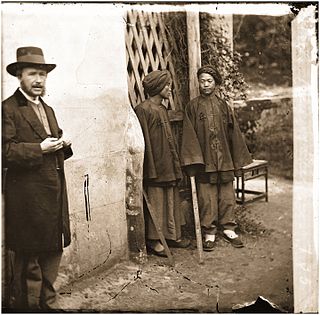
John Thomson FRGS was a pioneering Scottish photographer, geographer, and traveller. He was one of the first photographers to travel to the Far East, documenting the people, landscapes and artefacts of eastern cultures. Upon returning home, his work among the street people of London cemented his reputation, and is regarded as a classic instance of social documentary which laid the foundations for photojournalism. He went on to become a portrait photographer of High Society in Mayfair, gaining the Royal Warrant in 1881.

Alexander Boyd FRSA is a Scottish artist and photographer.
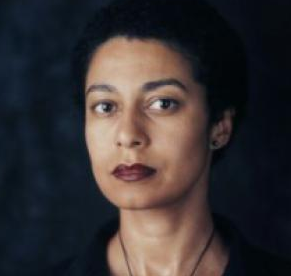
Maud Sulter was a Scottish contemporary fine artist, photographer, writer, educator, feminist, cultural historian, and curator of Ghanaian heritage. She began her career as a writer and poet, becoming a visual artist not long afterwards. By the end of 1985 she had shown her artwork in three exhibitions and her first collection of poetry had been published. Sulter was known for her collaborations with other Black feminist scholars and activists, capturing the lives of Black people in Europe. She was a champion of the African-American sculptor Edmonia Lewis, and was fascinated by the Haitian-born French performer Jeanne Duval.
Boushra Y. Almutawakel is a Yemeni photographer. Her work concerns the international perception of Arabs and Muslims and focuses in particular on the international perception of issues of gender and representations of Muslim/Arab women and their clothing.
Events from the year 1947 in Scotland.

Art in modern Scotland includes all aspects of the visual arts in the country since the beginning of the twentieth century. In the early twentieth century, the art scene was dominated by the work of the members of the Glasgow School known as the Four, led by Charles Rennie Mackintosh, who gained an international reputation for their combination of Celtic revival, Art and Crafts and Art Nouveau. They were followed by the Scottish Colourists and the Edinburgh School. There was a growing interest in forms of Modernism, with William Johnstone helping to develop the concept of a Scottish Renaissance. In the post-war period, major artists, including John Bellany and Alexander Moffat, pursued a strand of "Scottish realism". Moffat's influence can be seen in the work of the "new Glasgow Boys" from the late twentieth century. In the twenty-first century Scotland has continued to produce influential artists such as Douglas Gordon and Susan Philipsz.
The Saltire Society is a membership organisation which aims to promote the understanding of the culture and heritage of Scotland, founded in 1936. The society organises lectures and publishes pamphlets, and presents a series of awards in the fields of art, architecture, literature and history.
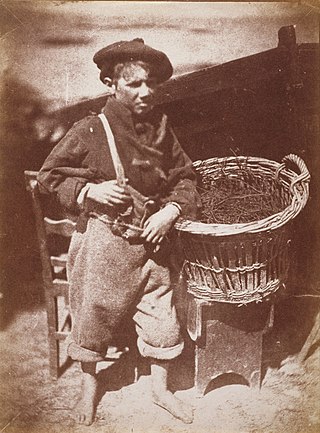
Scotland played a major role in the technical development of photography in the nineteenth century through the efforts of figures including James Clerk Maxwell and David Brewster. Its artistic development was pioneered by Robert Adamson and artist David Octavius Hill, whose work is considered to be some of the first and finest artistic uses of photography. Thomas Roger was one of the first commercial photographers. Thomas Keith was one of the first architectural photographers. George Washington Wilson pioneered instant photography and landscape photography. Clementina Hawarden and Mary Jane Matherson were amongst the first female photographers. War photography was pioneered by James MacCosh, James Robertson, Alexander Graham and Mairi Chisholm.
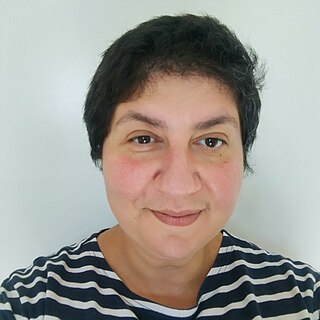
Nazli Tabatabai-Khatambakhsh is the inaugural Artistic Doctoral Researcher of Opera Librettist Practice Based at the Guildhall School of Music and Drama, 2021-2027. Her recent opera portfolio includes Royal Opera House, Aldeburgh Festival Britten Pears Arts, Birmingham Opera Company, Performance Arts Lab and National Youth Choir. She was the founder and artistic director (CEO) of ZENDEH, a former Arts Council England National Portfolio Organisation.
April Hickox is a Canadian lens-based artist, photographer, teacher and curator whose practice includes various medias, from photography, film, video and installation.
Genevieve Gaignard, born in Orange, Massachusetts in 1981, is best known for work exploring issues of race, class, and gender. As a self-identified mixed-race woman, Gaignard utilizes photography, videography, and installation to explore the overlap of black and white America through staged environments and character performances. She received an AAS in Baking & Pastry Arts from Johnson & Wales University, her BA in photography from the Massachusetts College of Art and Design in 2007, and an MFA from Yale University in 2014. Gaignard's work is represented by Susanne Vielmetter Los Angeles Projects, and has been shown at Shulamit Nazarian, The Cabin, The FLAG Art Foundation, The California African American Museum, The Foley Gallery, and at two residentially-owned art spaces in Los Angeles, CA. She was also included in the fourth iteration of the triennial Prospect New Orleans, in 2018, with an installation at the Ace Hotel New Orleans. Her work has been featured in The New York Times and The Los Angeles Times. Gaignard's photographic series draw inspiration from Carrie Mae Weems, Diane Arbus, Cindy Sherman, and Nikki S. Lee, remixed with the references to the selfie and Instagram culture.
Sylvia Grace Borda is a Canadian artist working in photography, video and emergent technologies. Borda has worked as a curator, a lecturer, a multimedia framework architect with a specialization in content arrangement (GUI) and production. Born and raised in Vancouver, Borda is currently based in Vancouver, Helsinki, and Scotland. Her work has been exhibited locally, nationally, and internationally.
Margaret Mitchell is a Scottish portrait and documentary photographer. Her work has recurrent themes of childhood and youth, place and belonging. She works on short and long term personal projects as well as editorially and on commissions. Her photography ranges from exploring communities, children and childhood as well as long-term documentation projects on issues of social inequality. Ideas around the paths that lives take have been explored in several series. A book of her work, Passage, was published in 2021.
Julie Roberts is a Welsh painter who works in acrylics, oils and watercolours. Taught at the Wrexham School of Art, Saint Martin's School of Art and the Glasgow School of Art, she used medical equipment and furniture in her early works before moving on to include deceased humans, dolls and mannequins in her paintings. Roberts has done group or solo exhibitions in several major American and European cities and her works are held in the public or private collections of various museums.









